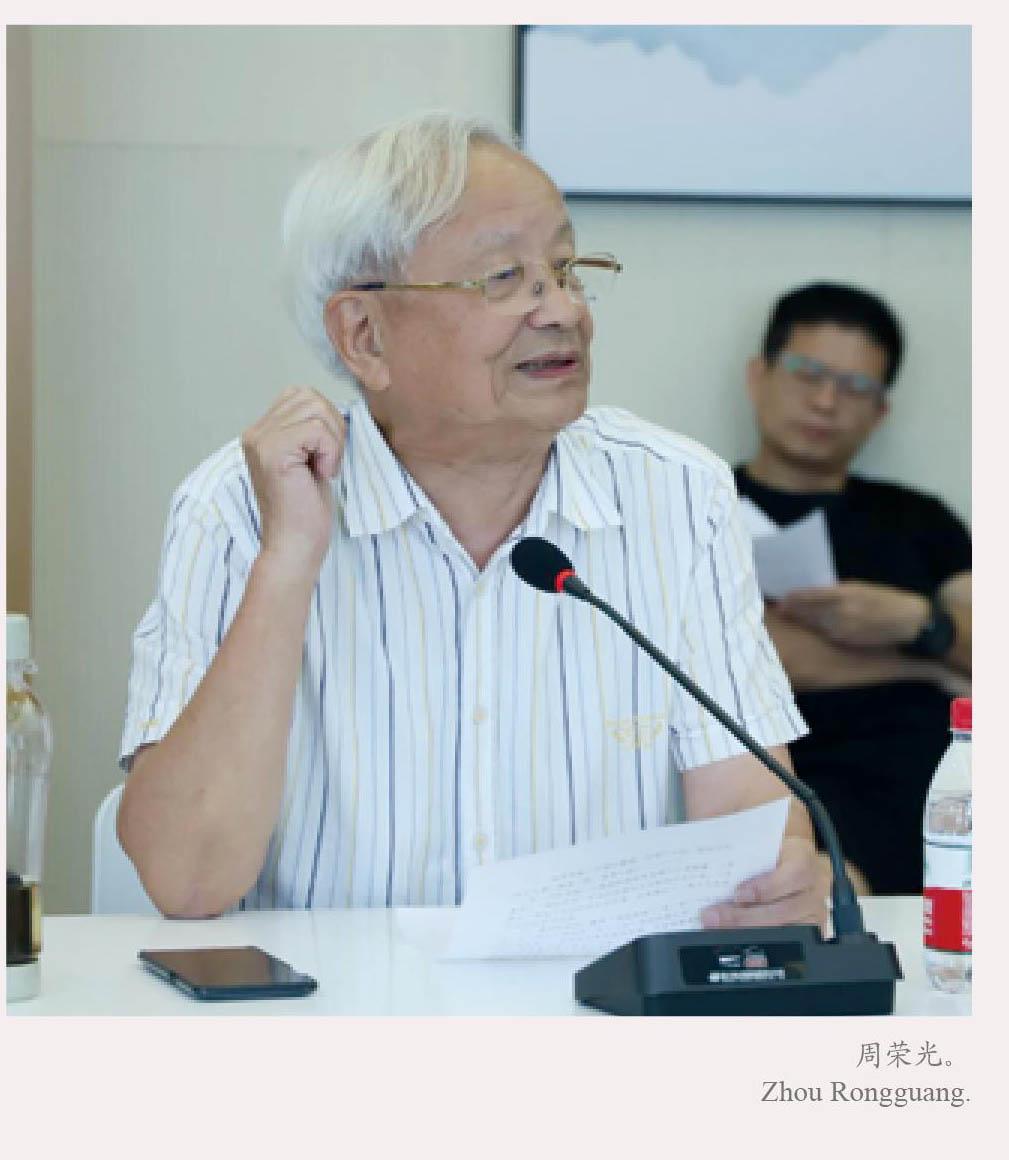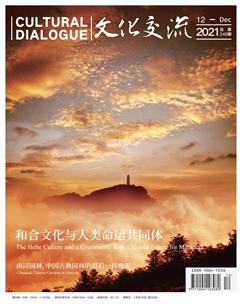为千年纸山作证
黄松光






何为泽雅?何为纸山?何为千年纸山?何为千年纸山文化?长期以来,泽雅被无标准地名、无行政版图、无文字史料这些“头巾”遮盖着,人们一直视它为神秘之地,并渴望打开这块人类自然文化历史“活化石”之谜?
一年前,温州媒体报道了年逾八旬的瓯海区退休干部周荣光退休十年只做一件事的事迹。他心系大山、著书立说、传播千年纸山文化的报道发布后引起社会较大反响。今年国庆前夕,86岁的“浙江好人”周荣光在经历一场大病的磨难之后又不遗余力、倾其心血交出了圆满答卷:“瓯江山水诗路”之中国纸山文化记忆丛书《纸山文化,自然法则》《温州屏纸版画研究》《纸山四宝》《泽雅 · 纸后策划》《那年,纸山行》《许愿三章》分别由新华出版社、浙江人民美术出版社、中国民族文化出版社、中国书籍出版社付梓出版了。
结缘:解开泽雅前世今生
论“泽雅”起源,说“纸山”出身,讲“千年纸山”身价,道“纸山文化”地位……在历史的长河里,标准答案自然难找,因此成为历代泽雅人接续不断的历史使命。
周荣光一个甲子都扎根于泽雅。1952年,以永嘉县财粮统计队小组长的身份,第一次翻山越岭去泽雅山区校对山农土地的“田亩册”。1962年,以温州市民政局干部身份负责泽雅山区扶贫济困工作。1982年,经组织批准周荣光正式调往上海市医药局党校工作,但实现了与妻子和儿女团聚愿望的他,一直牵挂着泽雅,又萌发重返泽雅山区扶贫工作的心愿。1987年9月,他从上海市委党校脱产读书毕业后,就立即申请重回温州泽雅“践行学术研究”,扶贫再次开启生涯。
半个多世纪与泽雅结缘的周荣光,对解开泽雅神秘之谜如痴如醉。他发现泽雅曾是个陌生的地名,据已发现的建于唐龙纪年间(889)的极乐禅寺寺碑记载,此前泽雅已有人类活动,但没有留下明确地名,仅称“永嘉西路诸山”,至晚清《永嘉县志》才标有“寨下”地名。明弘治《温州府志》记载:泽雅旧称“寨下”。清光绪《永嘉县志》载有“泽雅”之名,与温州方言“寨下”谐音。
周荣光从重返泽雅当“父母官”——泽雅区副区长、区长、书记起,立誓做地地道道的“泽雅人”,很快跑遍80余个村庄,与干部促膝谈心,与老农结为故友,摸清一山一水、一草一木、一垅一地、一村一落、一宅一姓的“底细”。他断定泽雅神秘之处:地处瓯江支流戍浦江沿岸,是一个山峦叠嶂、巅峰林立、坑谷纵横、溪流密布、平地狭小的地域,有千年造纸历史,始于唐宋,盛于明清,历以“纸山”为统称。这个区域的造纸方式,长期以来基本上与《晋书》所载的“造作水轮”“水激轮转”“一起一落舂之,即連机碓也”的方式相同,甚至千年不变。
周荣光将泽雅纸山文化的特征归纳描述为:中国南方沿海山区纸农文化,是中华民族文化脉脉相承的特殊区域文化,属古瓯越文化中农耕文化的一个支脉。这个支脉的文化发展特征是:在原始古老的山水文化孕育下,以千年纸山文化为主流文化的多元文化的特殊区域文化。它是古瓯越文化的一个支脉、中华民族“大文化”的重要组成部分,是绵延不断的千年文化遗产,此地构筑起了一座没有围墙的全域“纸山文化博物馆”,给人以智慧与力量。
周荣光将泽雅人自然文明观叙述为:泽雅人以“山为骨架,水为血脉”的自然环境构想,因地制宜,就地取材,追求人与自然和谐统一,把田园山水景观裁剪到人居村落中来融入宗族礼制、宗教信仰、风水观念、防御意识和劳动内容、烟火饮食、人文艺术等多方面功利要素和文化理念,构成“天人合一”的中国古代纸农社会特点的理想环境和协调的总体布局,创造了自身的生存繁衍和千年纸山文明史。这便是这一独特区域中诞生的纸山文化之魂脉。
泽雅人独特的生产生活方式是:山水为源,人力为本;平畴建屋,山坡造田;依山种竹,傍水造碓(槽);远水捣刷(料),高山种地;肩担手携,徒步裸履;石(岩)竹(材)制具,柴木生火;山外卖纸,山里为居;野餐为常,家聚为半;杂粮为主,瓜菜为代;全家劳作,自给自足。
泽雅人的性情气质表现为:粗放原始、古朴真实、简洁直观、自然本我,其中包括人的文化意识、思维方式、性格性情,待人接物、处事行为以及生产生活的劳动工具、劳动对象、制作技术、产品造型、用材质地、民居建筑、生活饮食等方面。
续愿:叫响“纸山文化”
数十年来,老周几乎终年山里山外、进进出出,不间断地走在泽雅、住在泽雅、吃在泽雅,尤被千年纸山文化深深吸引,暗自许诺在有生之年要让“纸山文化”走出大山。
2010年农历大年初二,已迈入75岁高龄的周荣光,由74岁老伴当“秘书”、女儿当“司机”,径直从上海出发,一路到庆元、遂昌、龙游、缙云、武义、青田等地吃“菜”比较,开始了研究“纸山文化记忆”的首个课题——“纸农菜”之旅。历经五载春秋,他最终搜集了泽雅山区1000余种纸山菜品、上百种炊具,把菜品归纳为23个大类、120个系列、1082种,包括30多种点心小吃、10多种家酒、10多种饮料、18种食疗菜整理概括了一整套操作方法流程、配套设施设备名称和宴请礼仪习俗,并总结出5大经典特色、6大传统技术、8大饮食文化、16字品质,形成菜品文化体系和谱系,并花费100余万元,由中华书局出版了中国第一部“纸农菜”研究成果丛书。囊括75万字、800余张图片的《泽雅 · 纸农乡味》,第一次叫响了中国“纸农菜”,并且有了自己的谱系。
屏纸版画是以泽雅屏纸原料为基础的杰作,更为温州悠久文明历史孵化的产物,曾一度被定为迷信用品而销声匿迹。周荣光从2018年开始探访温州尚存的两大发明即活字印刷术、纸马雕版印刷术和屏纸造纸术(简称“三术”),之后从历史考证和实际应用分析了“三术”联姻可使屏纸版画重生的可能性、现实性,提出“三术”联姻有“十同”基础结合点:同源、同流、同艺、同伴、同、同韵、同道、同需、同求、同命运。他边求索边实践终于使失传已久的古老艺术再现辉煌。他从10个方面的文化脉络予以发掘研究、考察论证,认为它是蕴含非遗“三术”元素的文化脉络源流之粹,具有独特艺术个性与文化意境韵味:故韵屏纸,瓯风雕术。他完成撰著《温州屏纸版画研究》,成为我国首部古瓯越文化之屏纸版画的研究著作。
“千年纸山”文化脉络告诉人们,泽雅存有“四宝”:纸农菜、屏纸版画、周岙挑灯、四连碓。“纸农菜”是泽雅人文化魂脉之延伸,是古瓯越文化中农耕文化在特殊区域的形式的一种食文化,是一座取之不尽、用之不竭的人类物质与非物质的文化宝库,给人类社会以“魂”与“力”,推动着历史发展与进步,是中华民族大文化中的一宗历史、一脉文化、一种资源。“屏纸版画”是与非遗“三术”技艺结合,从而创造出的一种新的技艺,也是一种文化艺术品。“周岙挑灯”指的是周岙正月十三闹花灯,这项民俗文化活动已有600余年历史,被称作浙南地区保存最好、最热闹、最有韵味的元宵灯会民俗活动,被列入省级非物质文化遗产名录。“四连碓”被称为是中国古代造纸术的“活化石”,其四连碓造纸作坊被列为全国重点文物保护单位。周荣光撰著的《纸山四宝》,论述“四宝”的产生、存在与发展的自然物化价值,并运用“原著手稿”与“正文对照”方式,成为独特新颖的著作。
纸山风光秀丽,古纸遗辉,地灵人杰,物华天宝。浸润于纸山山水之中,他用文学笔调写下了一篇篇散文,创作出了《那年,纸山行》。他还写了一首歌词《泽雅美,美就美在泽雅水》,邀名家谱曲,配以高昂雄壮、坚定信心旋律,令人振奋无比。
周荣光从在泽雅数十年的工作和生活中发现,泽雅97%地域是山与水,93%人口从事纸业与农业,造纸业衰落之后,该地区产业结构、就业结构、资源配置等都发生了巨大的变化,因此它的未来区域规划、资源利用、发展模式和经营方式、区际经济关系等都亟需重组。所以他大胆提出了《泽雅 · 纸后策划》课题,从特定的理论与应用两个方面,对其区域经济进行模拟规划。
纸山文化是人类社会共有的财富,周荣光在《纸山文化,自然法则》中给出了答案:天、地、人、道和自然融合一起,“千年纸山,自然泽雅”是自然法则,他集中论述了“纸山文化”源于自然、回归自然及其“在原始古老的山水文化孕育下,以千年紙山文化为主流文化、多元文化并存的特殊区域文化”的属性与定义。
夙愿:出版纸山文化丛书
周荣光自称“不文不武”,其实他从几十年参政、参军及退休的人生历程中走来,一直都属于“能文能武”者。尤其是46岁时他萌发“仕途淡去,学术有道”之念,自我设计人生“方向标”,走上亦政亦学之路,开始潜心攻研区域经济学,他在泽雅边实践边探索,撰著了《泽雅山区经济探索》一书,用40年撰著了1000万字、100余篇研究论文,均以真挚的情感、求是的信仰阅读世态、探究经济、策划时空,破译人类社会发展的源和流。他先后撰著出版22本书籍,其中由新华出版社出版他在国内首次提出“跨越第三步”命题的同书名《跨越第三步》。他被誉为“区域经济研究学者”“独立策划人”,新华出版社此后又出版了他的经济研究论文集、上下册的《天地方寸间》。
十年纸山行之后,85岁的周荣光立誓要在有生之年完成纸山文化记忆丛书撰著。2020年5月31日,他再次带着84岁且大病康复中的老伴来到温州,并将老伴安置在瓯海颐养中心,自己则扑在出书上,从《温州屏纸版画研究》等丛书的封面设计、书样校对、文章修改到书号申请等。那段时间他每天没日没夜地工作,疾病突然降临:7月9日午夜,他肝部疼痛难忍,彻夜难眠,熬到次日四时多,只身到附近医院急诊挂滴,然后辗转至温州市中心医院救治。但在住院治疗的十天里,他仍不停地在病床上改稿、写稿,并撰写“众筹”出版发行的策划书。7月19日,他被儿子转院到上海治疗,却被诊断为肝癌。7月24日,85岁的他被推上手术台前最牵挂的仍是纸山文化记忆丛书的出版发行……两个月后,当就在出院康复疗养的当天,他又风尘仆仆地乘高铁从上海返回温州。之后的一年多,他一边疗养康复,一边护理老伴,一边继续撰写、修改丛书,并由温州瓯海区委组织部、宣传部等“众筹”到120万元帮助他实现晚年的“心愿”。今年国庆前夕,由他编著的200万字的“瓯江山水诗路之中国纸山文化记忆丛书”六册终于出版发行。这是首部反映古瓯越特殊山水风情文化的见证记录,是记录千年纸山文化遗产之巨作,向世人展示了“瓯越文化遗存,活态保护传承”之瑰宝。
周荣光自称,为千年纸山作证是有生之年的最大愿望,十年间,他独立完成了写泽雅、说泽雅人、讲纸山、道纸山文化的10本共400万字、上万张图片的珍贵文史书籍创作,成为破译人类社会发展“密码”的集大成者之一。
Bearing Witness to the Thousand-Year-Old
Paper Mountain
By Huang Songguang
What is Zeya and where is it? What is the Paper Mountain? What is the thousand-year-old Paper Mountain? What is the thousand-year-old Paper Mountain culture? For a long time, Zeya is “obscured” by a lack of standard place names, administrative territories and written historical materials. To outsiders, Zeya has always been looked upon as a mystery, and many are keen to crack open the secrets of the “living fossil” of mankind’s natural and cultural history.
Thanks to an 86-year-old retiree, more people will now get to know about Zeya and its mysterious Paper Mountain culture. For more than a decade, Zhou Rongguang, a retired official from Ouhai district in Wenzhou city, has been dedicated to one single goal: to write about the Zeya mountain area and its papermaking tradition. The result? A series of six books, including The Paper Mountain Culture and the Natural Laws, A Study on Wenzhou’s Screen Paper Prints, The Four Treasures of the Paper Mountain and Journeys to the Paper Mountain, which have been published recently by Xinhua Publishing House, Zhejiang People’s Fine Arts Publishing House, China Nationality Culture Press and China Book Publishing House.
When it comes to the origins of Zeya and the Paper Mountain, and the significance of the Paper Mountain culture, there seems no standard answers readily available, which has become the historical mission for the local Zeya people to find out.
It has taken Zhou Rongguang a full sixty years to know Zeya. In 1952, the first time that Zhou had ever set foot in the Zeya mountain area, he was there calibrating the local agricultural land. In 1962, he was put in charge of the poverty alleviation campaing in the Zeya mountain area. Twenty years later, Zhou was finally able to reunite with his family in Shanghai, but poverty alleviation in Zeya was never far from his mind. In September 1987, he asked to return to Zeya and stayed there for another six years.
From the very beginning, Zhou has been fascinated by the enigmatic Zeya. For one thing, he found that the name of the place is a puzzle in itself. While a temple inscription dating back to the year 889 in the Tang dynasty (618-907) shows that humans had long been settled in the area, no specific names were recorded, except for the general designation “mountains in the west of Yongjia [as Wenzhou has been historically known]”. It wasn’t until the late Qing (1616-1911) period that the name “Zhaixia” was found in the local annals. Zhaixia, literally meaning “under the mountain village”, is pronounced Zeya in the local dialect.
After Zhou Rongguang returned to Zeya, he became the head of the then Zeya Area. He immersed himself into the place, vowing to be a genuine “Zeyan”. Soon he covered more than 80 villages in the area, had heart-to-heart talks with the locals and got to know the details of every household, every hill, every river. He concluded that Zeya, located in the Oujiang River tributary, has a thousand years of papermaking history, which started in the Tang and Song (960-1279) dynasties and prospered in the Ming (1368-1644) and Qing dynasties. The place has historically known as the “Paper Mountain”. Indeed, throughout the millennium, the way of producing paper in this area remains unchanged.
For Zhou, the Paper Mountain culture is a paper agricultural culture in the mountainous areas of east China’s coast. It is a unique regional culture in China and a branch of the agricultural culture of the ancient Ouyue culture. He defined it as “a special regional with the thousand-year-old Paper Mountain culture as its core, born in the primitive ancient landscape culture”. Now, it has become a “Paper Mountain Culture Museum” without walls.
The Zeya people’s unique way of production and life is described as human-oriented, taking nature as the source. They build houses on flat ground and till farmland on the hillside; they plant bamboo along the mountains and build water hammers alongside the rivers; they soak fresh bamboo in lime water and mash it through water hammers; they carry goods with shoulders and hands, and walk barefooted; they make tools out of stones and bamboo; they sell paper outside of the mountain area whiling living inside; and the whole family works and provide for themselves. The temperament of Zeya people is considered to be natural and ingenuous.
Over the years, Zhou had stayed in the Zeya mountain area, traversing there, sleeping there, eating there, mesmerized in particular by the age-old Paper Mountain culture. He was determined to bring the Paper Mountain culture to a much wider audience in his lifetime.
In 2010, on the second day of the Chinese New Year, the then 75-year-old Zhou, accompanied by his wife, who doubled as his “secretary”, and his daughter, who served as his “chauffer”, hit the road for his first project on the Paper Mountain culture: the local cuisine. In the next five years, he collected over 100 cooking utensils and 1,082 dishes, which he then put into 23 categories and 120 series. In addition, he also obtained more than 30 snacks, 10 acholic drinks, 10 soft drinks as well as 18 dietary therapy dishes and their cook methods, apart from wedding banquet customs. He personally spent one million yuan and published with the Zhonghua Book Company the first ever book series in China on “paper farmers’ dishes”.
The screen paper prints are another project that Zhou worked on. Based on the Zeya screen paper, the traditional screen paper prints, often used as paper charms, have been lost in recent decades. However, after Zhou examined Wenzhou’s movable type printing craft, its traditional paper charm printing craft and the screen papermaking craft in Zeya, he not only helped revive the practice of screen paper prints, which is now called “Wenzhou Screen Paper Prints”, but also published a monograph — again China’s first — on it.
In another of Zhou’s book, Four Treasures of the Paper Mountain, he recounts the origins, development and significance of the four treasures in Zeya. The paper farmers’ dishes are seen as the essence of the local food culture and a mirror of Zeya’s unique regional culture, while the screen paper prints are regarded as a historical art form given new life. On the other hand, the “Zhou’ao Hanging Lanterns”, observed on the 13th of the first lunar month for the past 600 years, is one of the largest and best-preserved lantern traditional fairs in Southern Zhejiang, and it is also an intangible cultural heritage protected at the provincial level. The fourth treasure, the Siliandui Papermaking Workshops, mainly consisting of workshops in Shiqiao village, Hengyang village and Tangzhai village in the Zeya mountain area, is the “living fossil” of China’s ancient papermaking craft.
On top of the above works, Zhou has studied on Zeya’s economic, industrial, employment and resources structure, offering advice and formulating plans for its future development. He has also composed essays (collected in the Journeys to the Paper Mountain) and even lyrics for Zeya.
While often self-deprecatingly calling himself an incompetent writer, Zhou has published 22 books and some 100 papers in the past four decades. In July 2020, even when he was diagnosed with liver cancer and had to undergo operation, Zhou still insisted on finishing writing on Zeya and the Paper Mountain culture. The six books on the history of Zeya and the Paper Mountain are valuable records on this unique culture, and on the natural beauty and social customs of the Oujiang River area. Their publication is also a testament to Zhou’s perseverance and his love for Zeya.

